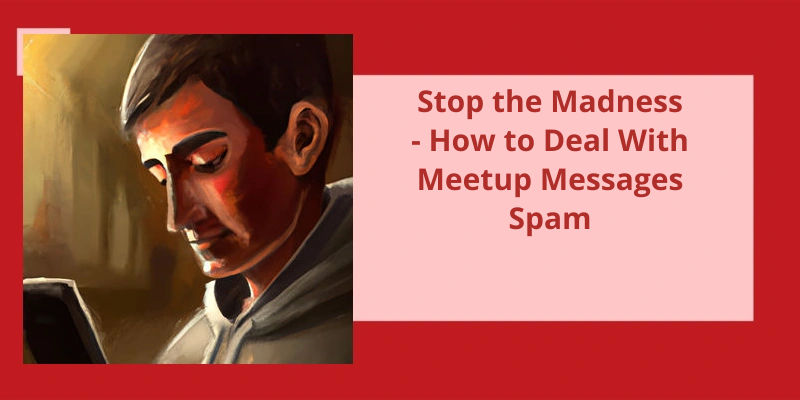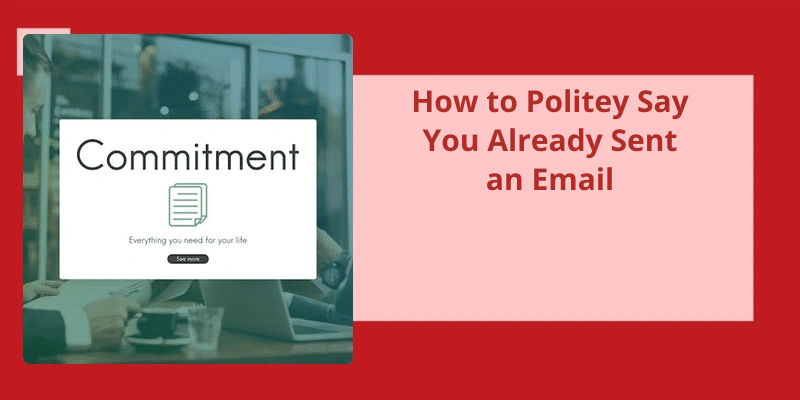As the world becomes increasingly connected, the importance of networking and meeting new people has become more and more apparent. Meetup is one platform that allows users to connect with individuals who share similar interests and hobbies. However, despite the benefits of using Meetup to socialize, one crucial issue that arises is ensuring that meetup messages don’t get lost in spam or junk folders. Emails from Meetup in the spam folder can cause users to miss out on important information and opportunities. Additionally, marking these messages as safe can ensure that they’ll not be caught in the spam filter in the future. By taking these simple steps, users can continue to enjoy the benefits of Meetup without worrying about missing out on key information.
What Kind of Site Is Meetup?
Through Meetup, users can create groups or join existing ones, and communicate and collaborate with other members to plan and execute events such as hikes, book clubs, language exchanges, and networking sessions. The site provides tools for scheduling, RSVPing, messaging, and sharing photos and videos related to events, as well as for collecting contributions or fees from attendees. Meetup enables people to discover new connections, pursue their passions, and build relationships with others who share their values, goals, or challenges.
By encouraging people to step out of their comfort zones, try new things, and engage with different perspectives, Meetup creates opportunities for personal and social transformation.
Meetup also benefits from it’s global reach and diverse user base. With millions of members in more than 190 countries and territories, Meetup spans a wide range of demographics, cultures, and subcultures. This diversity fosters cross-cultural understanding, empathy, and creativity, and allows people to connect with others who they may not have met otherwise. Moreover, Meetup allows users to search for groups and events based on location, category, keyword, or date, making it easy to find activities that suit their preferences and schedules.
However, in recent years, Meetup has faced some challenges due to the emergence of new competitors and the impact of COVID-19 pandemic on in-person gatherings. Some users have criticized Meetup for it’s high fees or for favoring larger groups over smaller ones. Others have pointed out that virtual events may not offer the same sense of community or spontaneity as physical ones, and that some groups may struggle to adapt to the new format. Nonetheless, Meetup continues to evolve and innovate, for example by introducing new features such as Meetup Live, which allows hosts to stream events directly to their audiences, or by partnering with other platforms such as Couchsurfing or Airbnb to promote networking and travel opportunities.
As Meetups slogan says, “Do something. Learn something. Share something. Change something.”
Tips for Creating and Managing a Successful Meetup Group
- Choose a niche topic that you’re passionate about and that’s a clear audience.
- Be consistent with your Meetup schedule and have a regular meeting time and place.
- Promote your Meetup group through social media, email marketing, and word of mouth.
- Encourage members to take an active role in the group by suggesting topics, helping with event planning, and recruiting new members.
- Provide value to members by offering informative presentations, interesting speakers, and networking opportunities.
- Establish a code of conduct and enforce it consistently to ensure that all members feel safe and respected.
- Continually evaluate and adjust the group based on member feedback and changing needs.
- Track the success of your Meetup through attendee numbers, social media engagement, and business connections made.
- Keep the group focused and on-topic, and avoid becoming too broad or drifting away from the group’s core mission.
- Remember that building a successful Meetup group takes time, effort, and dedication, but the rewards are well worth it.
In addition to communicating with members through Meetup messages, there are other ways to stay in touch and keep everyone informed. One effective method is the use of mailing lists. This allows organizers to send out regular updates and announcements to their members via email. Read on to learn more about how to use mailing lists effectively and keep your group connected and informed.
What Is Meetup Chat?
Meetup chat has become an increasingly popular way for people to connect with others around shared interests, hobbies, and professional pursuits. Through Meetup, individuals can form groups, attend events, and engage in discussions with like-minded individuals. In addition to the various features that Meetup offers, the platform also provides a messaging system that allows members to communicate with one another one-on-one or in small groups. This chat feature can be incredibly useful for coordinating events, sharing ideas, and building relationships within a community.
Mailing lists are another effective way to keep members up-to-date on events, news, and other important information. By using a mailing list, organizers can send regular updates to their group members and ensure that everyone is on the same page. Additionally, many email service providers offer templates and automation tools that make it easy to create and manage these lists.
This feature can be particularly useful for planning events or discussing group-related topics in a more intimate setting. Because messages are sent directly to recipients” Meetup inboxes, they’re easily accessible and organized. Additionally, since only the members included in the conversation can view the messages, this feature can be extremely effective for maintaining privacy and fostering more personal connections within the group.
By joining Meetup groups that align with their interests, individuals can form connections with people from all over the world. This can be especially beneficial for those who live in more rural areas or who may not have many opportunities to connect with others who share their hobbies or professional pursuits.
From organizing events and sharing ideas to developing personal relationships and fostering a sense of belonging, these features can help individuals feel more connected and engaged with the world around them. By taking advantage of these tools and resources, individuals can form meaningful connections with others, discover new opportunities, and build a sense of community that extends far beyond the digital realm.
How to Effectively Use Meetup Chat for Networking and Building Professional Relationships.
In this article, we will discuss some tips and tricks on how to effectively use Meetup chat for networking and building professional relationships. By focusing on personalization, using chat for follow-up and initiating conversations, and creating meaningful messages, you can leverage Meetup chat to make valuable connections within your industry.
As much as we’d like to tell you how to delete messages on Meetup, the sad truth is that it’s just not possible right now. But fear not – a pristine inbox is still possible. Keeping your inbox organized as you become more active on Meetup is key to managing your messages effectively. So, let’s explore some tips on how to archive your old or finished messages on Meetup to help keep your inbox clean and happy.
How Do You Delete Messages on Meetup?
While it isn’t currently possible to delete a message on Meetup, there are still ways to keep your inbox organized. One way to do this is by archiving old or finished messages. This helps to declutter your inbox and keep only relevant messages visible. To archive a message, simply click the archive button located at the bottom of the message.
This feature can be particularly helpful if you’re trying to locate a message from a particular group, member, or event. You can simply type in the keywords or phrases that relate to the message you’re looking for, and the search function will display all messages that match your query.
If you’re receiving too many messages on Meetup and find that your inbox is getting cluttered, you can also adjust your notification settings. By doing this, you can choose to receive notifications only for messages that are important to you, such as messages related to your RSVPs or events that you’re attending.
Additionally, you can also mark messages as unread to remind yourself to go back and read them later. This is particularly useful if you receive a message but don’t have time to read it at the moment. To mark a message as unread, simply click the circle next to the message title, and it will turn gray. This way, the message will remain in your inbox until you’re ready to read it.
If you receive a message that’s no longer relevant or important, you can simply respond to the message with a brief note stating that you’re no longer interested.
Source: How to delete messages and conversations on meetup?
Managing a Meetup group comes with certain challenges, one of which is dealing with troublesome members. It’s not uncommon to encounter situations where you may have to block a member to maintain the integrity of your group. But what happens when you do? Let’s explore the implications of blocking a member on Meetup and what it means for all parties involved.
What Happens When You Block a Member on Meetup?
Meetup is an online platform that brings people together to create communities around shared interests, hobbies, and activities. However, not all members may have positive interactions with each other. Sometimes, it may be necessary to block someone from a Meetup group to maintain a safe and respectful environment for everyone.
When you block a member on Meetup, they’re removed from your group and all future events that you organize. This means that they’ll no longer be able to access any information or communication related to the group. The blocked member will also lose access to any events they’ve previously RSVPd to.
If a member is removed from a Meetup group, they can still rejoin the group if they wish to do so. However, if you ban a member, they’re permanently removed from the group and can’t rejoin. This is an important distinction to make because banning someone should only be done in extreme situations where their behavior is harmful or disruptive to the groups members.
When a member is removed or banned, they’ll receive a notification message that informs them of their removal from the group. This message is short and to the point, and it doesn’t provide any details regarding the reason for the removal or ban. It simply lets the member know that they’re no longer a part of the Meetup group.
Blocking or banning a member on Meetup should be done only as the final option after all other avenues have been explored. It’s always best to try and resolve any conflicts or issues that may arise within the group through open communication and discussion. However, in some cases, blocking or banning may be necessary to maintain a safe and respectful environment for all members of the group.
How to Report Inappropriate Behavior on Meetup
- Find the event with the inappropriate behavior
- Click on the event
- Scroll down to the bottom of the page
- Click on “Report this event”
- Select the reason for your report
- Provide additional details
- Click on “Submit report”
Communicating with members and organizers is an essential part of getting the most out of your Meetup experience. One option for reaching out to other members is by sending messages. By contacting people directly, you can share your thoughts, interests, and ideas. However, it’s important to approach each message thoughtfully and avoid generic or canned messages. To send a message, you’ll need to visit the member’s profile and initiate contact.
Is It OK to Message Someone on Meetup?
Meetup is a great platform for people with common interests to come together and share their passion. The platform encourages members to join groups and attend events where they can meet like-minded people. However, sometimes people may feel hesitant to reach out to other members or event organizers, unsure of the proper etiquette or whether it’s acceptable to send a message.
When sending a message on Meetup, it’s important to read the members profile to understand their interests, goals, and motivations for joining the group. This will help you craft a message that resonates with them and shows that you’re genuinely interested in building a connection. Be respectful and polite in your message, and avoid using inappropriate or offensive language.
If you’re reaching out to an event organizer, make sure to introduce yourself and explain why you’re interested in attending their event. Ask any questions you may have and offer your help if needed. Remember that organizers are volunteers and may not always have the time to respond immediately, so be patient and understanding.
Just remember to be personal and unique in your message, read the members profile to understand their interests, and be respectful and polite in your communication. Dont be afraid to reach out and start a conversation – it may lead to a great friendship or partnership in the future!
In addition to their different levels of formality, Meet and Meetup are also two different platforms that serve different purposes and audiences.
What Is the Difference Between Meet and Meetup?
Both “meet” and “meet up” refer to the act of coming together with someone in person. When you use the word “meet,” it generally implies that you’ve scheduled a meeting beforehand with a specific person or group of people. This could be a business meeting, an interview, or a formal event where you need to network with other professionals.
You might say to a friend, “Hey, lets meet up for coffee later,” meaning you don’t necessarily have a specific time or place in mind yet but are open to making plans.
On this platform, users can organize and attend group events and activities based on shared interests. These events are called “meetups” and can range from outdoor hikes to book club meetings to wine tastings.
Ultimately, both phrases are valuable tools for creating connections and building relationships.
Conclusion
The rise of technology, including AI, has increased the likelihood of such messages being marked as spam. This simple step can facilitate more efficient communication, networking, and community-building for all Meetup users.






